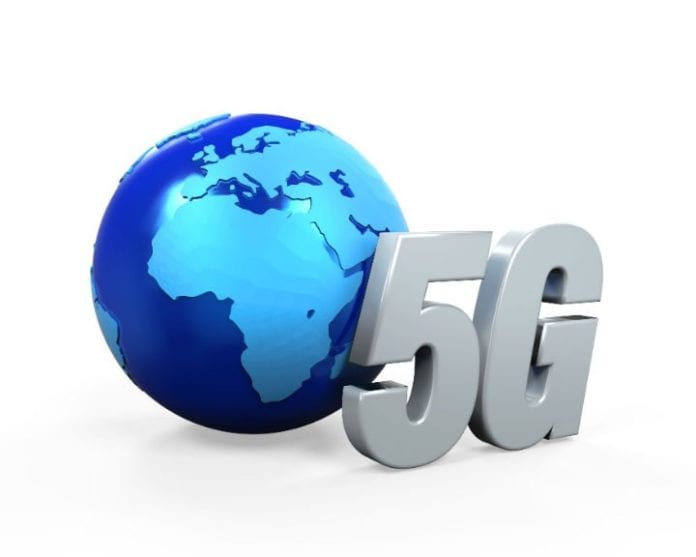Global 5G rollouts show no sign of abating, says GSA president
Last week, the Global mobile Suppliers Association (GSA)’s August 2019 5G Ecosystem Report confirmed that the number of announced 5G devices has passed a major industry milestone, with 100 5G devices now announced globally. The GSA also revealed that 56 operators in 32 countries have announced deployment of 5G within their live network, with 39 operators having announced 3GPP 5G service launches.
The GSA’s 5G device tracking, which is part of the association’s Mobile Broadband Devices (GAMBoD) database, reports global device launches across the 5G ecosystem as it moves from service trials and prototype user equipment to commercially available services and devices.
Joe Barrett, GSA president, said that the pace of 5G is continuing to accelerate. “What’s more,” he added, “it shows no sign of abating. This month the industry hit the milestone of 100 announced 5G devices, but we expect to see in the region of 150 devices across all form factors by the end the year. Devices, networks and services go hand-in-hand, and as these two reports show the momentum is right across the 5G ecosystem.”
The report indicates that as of the first week of August 2019 GSA, 41 vendors have announced available or forthcoming 5G devices, including sub-brands separately. There are a total of 100 announced devices, up from 90 at the end of June: 26 phones, at least 9 of which are now commercially available; 8 hotspots, at least three of which are now commercially available; 26 CPE devices, at least 8 of which are commercially available; 28 modules; 2 snap-on dongles/adapters; 2 routers; 2 IoT routers; 2 drones; 1 laptop; 1 switch; 1 USB terminal; and 1 robot.
US: Verizon
Using its millimeter wave spectrum, Verizon has offered mobile 5G service in Chicago and Minneapolis since early April, and recently moved into the Denver, Providence, Washington DC, Atlanta, Detroit, Indianapolis and St. Paul markets. When compared to other major US carriers, Verizon has the most 5G device options, offering the LG V50 ThinQ 5G, the Samsung Galaxy S10 5G, the Motorola moto z3 and z4 with 5G Moto Mod attachment, a 5G hub, and most recently, Samsung’s Galaxy Note10 and 10+ 5G.
In an attempt to remain a critical player in the ongoing 5G movement, which the GSA confirmed will only continue to gain momentum, Verizon also developed a 5G Lab that aims to discover the possibilities of 5G technology to help grow the 5G ecosystem.
Verizon has listed 14 cities that can expect 5G soon, including Boston and Dallas, and the carrier intends to expand 5G to 30 cities by the end of this year.
Europe: Vodafone UK
Vodafone UK’s 5G network first launched in Birmingham, and is now live in parts of 15 UK towns and cities, including 5G Birkenhead, Glasgow, Lancaster, Liverpool, London and Manchester. The European carrier plans to add Blackpool, Bournemouth, Guildford, Portsmouth, Reading, Southampton and Warrington to its coverage map later this year.
Vodafone UK offers 5G on the Huawei Mate 20 X 5G, the Samsung Galaxy Note10 and 10+ 5G, the Samsung Galaxy S10 5G and the Xiaomi Mi Mix 3 5G. They also have the 5G GigaCube, a wireless router that will turn Vodafone’s 5G network into Wi-Fi, connecting up to 64 devices in seconds.
Vodafone has said that it expects its 5G rollout timeline to mirror its 4G rollout, with around 50% of devices getting a 5G connection by the mid-2020s.
Asia: NTT DoCoMo
NTT DoCoMo, Japan’s largest wireless carrier, has been experimenting with 5G since 2010. Last year, the carrier announced plans to launch pre-commercial 5G services in September 2019 and aims to launch commercial 5G services across Japan by mid-2020.
The carrier has run a number of 5G trials in September 2018, successfully achieved 25–27 Gbps download speeds. According to NTT DoCoMo, the 5G trial, conducted with Mitsubishi Electric, could be used to develop a high-speed 5G network that works with vehicles.
A few weeks ago, Japanese companies NEC Corporation and Fujitsu began delivery of 5G equipment for NTT DoCoMo’s 5G deployment. NEC is already supplying the carrier with radio units (RU) for 5G base station equipment. The 5G RU products have built-in antennas equipped with beam forming, enabling efficient network deployments, and have a line-up consisting of 3 types of equipment that support 5G frequencies (the 3.7 GHz band, the 4.5 GHz band, and the 28 GHz band).
Australia: Telstra
Australia’s Telstra began launching 5G in August 2018, and now has 5G coverage in 10 regions across the country, including parts of Perth, Melbourne and the Gold Coast. The carrier said rollouts will increase to at least 35 cities over the next 12 months.
Like Vodafone UK and Verizon, Telstra currently offers 5G on the LG V50 ThinQ 5G, the Samsung Galaxy S10 5G, and the Samsung Galaxy Note10 and 10+ 5G. The carrier, however, also offers the Oppo Reno 5G.
According to the carrier’s website, Telstra is working on bringing the power and speed of 5G to banking through 5G ‘edge computing’ trials.
Last month, Telstra announced that, in partnership with Ericsson, it had completed the world’s first end-to-end standalone 5G call. The call, which was completed via the 3.6GHz spectrum using a forthcoming commercial chipset, took place at Telstra’s 5G Innovation Centre on the Gold Coast.

